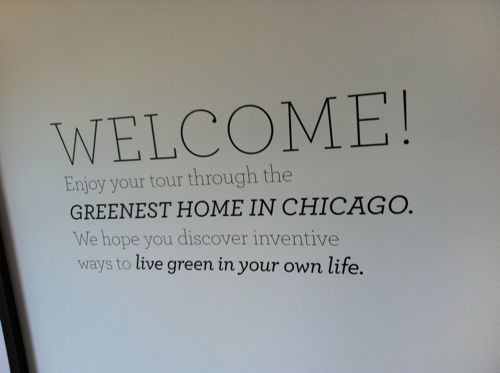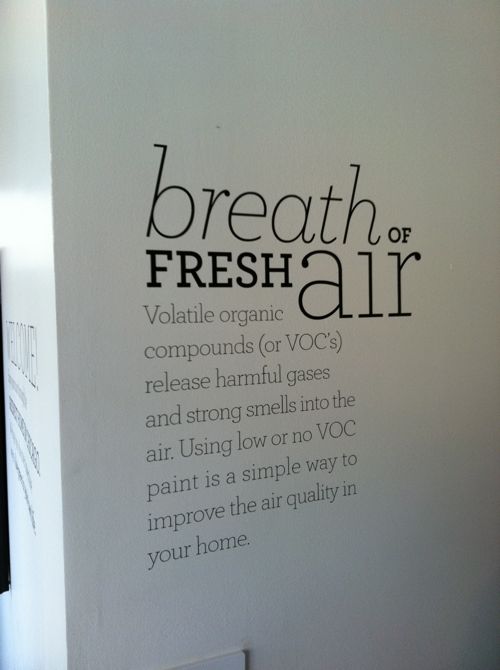
There’s plenty of talk about eco-friendly building, but you don’t always see how these sustainable ideas can be brought to market. About a month ago I visited the Smart Home Exhibit at the Museum of Science and Industry in Chicago. It was very cool to learn how they’ve implemented technology to create the “greenest home in Chicago,” and what really came across was the heavy emphasis on efficient systems. As consumers, we often focus on buying efficient products like LED light bulbs. While they are beneficial, LED bulbs have a relatively low impact. If we fixate on green products, we’ll miss out on the huge potential that a better workflow can bring. The Smart Home Exhibit is more of a “concept home,” but it really illustrates this point well. Here are two examples of what I mean.



Green Roofs
From the ground up to the roof, Smart Home’s landscape design demonstrates an eco-friendly aesthetic with systems that sustain and replenish the environment: green roofs, Ipê decking, rain barrels, bioswales, porous paving and rain gardens.
At the exhibit, I learned how the green roof helps insulate the home and reduce the urban heat island effect- when a metropolitan area which is significantly warmer than its surrounding rural areas. The roof also absorbs rainwater and minimizes runoff. The plants are watered with “grey water” from showers, rinse water, etc. and rainwater collected in underground rain barrels. The plants they grow are vegetables and herbs, or native plants that attract beneficial insects. A green roof plays a significant roll in the energy and water efficiency of the home, and provides so much more than just protections from the elements.

The Command Center
It’s a special home to be outfitted with the latest in smart technology by Gizmodo, and they spared no expense. The automated smart technology system controls heat, window treatments, lighting, tracks utility consumption and more. Why is this important? Optimized skylights mean more natural light and better ventilation, reducing the need for artificial lights and air conditioning. Adjusting the shades prevents the room from getting too hot. Tracking the energy needs of each individual appliance ensures they hit their full potential. Hibernation mode does exactly what you think- minimizing energy use while on vacation. The command center also tracks the energy being produced by the solar rooftop film and wind turbine.


I share these examples not to say that green products don’t have importance. Quite contrary, specific products like spray-in foam insulation can play a big roll in implementing a green system. My point is that a more efficient workflow is important because it has bigger payout.
What typical processes can we all improve to have less impact on the environment around us? Do you see ways to implement a green system?







Speaking of LED lighting… I just found some LED replacements for my landscape lights, and they are reasonably priced. Now I just need to find some reasonable candelabra LED bulbs and wire up an X10 system with a light sensor so everything on the front of the house comes on/off at the same time. And I wont even feel bad about leaving it on all night.
I had a rude awakening when I moved off campus in college and got my first electric bill. I immediately went out and got some CFL bulbs and set all of my computers to go to sleep when idle. That literally cut it in half. Then when we moved into our house, the electric was pretty high in the summer, we had an old fridge, a small window AC unit (only run at night in our bedroom), and a pool pump. The next year I had put the pool pump on a timer (cutting it down to ~8 hours a day), replaced the busted 15 year old fridge with an energy star one, and gotten central air. Even with the central air our bills were still lower, I am not sure if the pool pump and the old fridge were THAT bad… or if the little window unit was pretty bad as well.
I try to see all of this “green” stuff practically, usually on the side of me saving money. More efficient lighting is obvious (especially when purchased on sale). Recycling, I do it because I have to pay by the bag at the transfer station, so if I take out a giant pile of cardboard, a big bin of plastics, a bag full of paper, etc. it is stuff I don’t have to pay to throw away (if only they recycled styrofoam… grr).
X10 – now there’s a technology that I just don’t understand why it hasn’t caught on more. I had the Radioshack brand Plug-n-Power units about 15 years ago and thought they were simply amazing – that before long all the switches and outlets in our houses would have these little chips integrated (cost and even securing them has to be pretty minimal, I would think) … but that hasn’t happened. Now we see FAR more expensive home automation equipment being sold (to the tune of 10s of $1000s of dollars).
We replaced an old fridge a while back and definitely noticed the savings on our bill. The old gridge had to be costing $10-20 a month MORE than the newer energy star model.
I think the main reason we don’t focus on process improvement is that it changes our comfort level or takes time. For example, if we took fewer showers, it would be a process change, but then we’d feel dirtier. It is good to remember though that even just taking shorter showers would help.
Also saving the bath water for plants is a good one, but takes time and energy. That’s why I think these green homes will get more popular because they don’t require the extra time\energy (when the rain barrels are built into the drainage system!)
I hope more builders take advantage of these things, it’s going to have to come from the consumers asking for it though…
You are right on consumer demand being the driver. Unfortunately, many energy saving expenditures go into the short-term vs. long-term trade-off bin: spend a little more money this year to save 15% over the next 5 years. It’s hard for us to part with that money now, especially when it’s an invisible change (aka insulation) that just hits the bottom line every month.
There’s also a good bit of snake oil out in the energy-saving movement, and I think a clearer understanding of what the real expenses and savings are is valid. I hate it when someone tells me “spend 1,000 now and you’ll save $300 a year forever” – I need data to show me that ‘s realistic.
I’m with you Fred. I was excited when UL said they were going to start measuring “green-ness” because they’re a reputable source for consumers. I haven’t heard much since then and I don’t know how effective the program will really be.